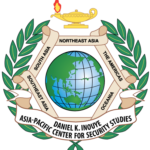By Deon K. Canyon [1]
Benjamin J. Ryan [2]
Introduction
The act of offering humanitarian assistance and disaster relief (HADR) was initially a selfless one with the United Nations principles focusing on addressing human suffering, not taking sides, giving based on need, and being free from influence. There are, of course, many wonderful outcomes under the cooperation umbrella that result from the provision of HADR, regardless of what nation or agency provides the aid.
The delivery of HADR by the military has become standard practice, especially in the Indo-Pacific. In this region, proactive efforts to enhance military-to-military and military-civilian integration are now maturing and have been primed for the next phase, integration of the private sector. This sector has more local capacity than any other agency or organization combined. Their direct relationship with communities can help ensure aid reaches all areas of society, increasing the likelihood of a rapid response and recovery.
HADR has also emerged as a sophisticated diplomatic tool for strategic competition. The following describes how this had evolved across the military sector and the role the private sector has in providing an economically viable strategic edge in soft power competition.
Military HADR diplomacy
Despite Eurocentric proponents resisting the military’s involvement, claiming that it cannot by its very nature abide by the United Nations principles, the use of militaries to deliver HADR has become standard practice. This is especially true in the Indo-Pacific, where nations have proactively sought to improve military-to-military and military-to-civilian integration to extend this relationship. Demand for HADR is highest in the Indo-Pacific, whose inhabitants experience increased frequency and intensity of weather-related disasters. In these areas, the growing lack of capacity in principle-based, global humanitarian networks to cater for people in need, and reduced resources available to undertake United Nations HADR missions, have forced governments to accept military assets to provide HADR to their populations. The emergence of Multinational Military Coordination Centers (MNCC), designed to coordinate increasing military assistance, and the ASEAN Militaries Ready Group (AMRG), designed to coordinate militaries in a joint response to disasters in the ASEAN region, indicates the permanence of this trend.
While the goodness of aid provision is undeniable, identifying routes to increase goodwill and extend influence is fundamental to human nature. The provision of international assistance has long been strategically used to achieve this aim. The nature of this influence varies depending on who is assisted and the underlying motivation of the assistor. For instance, while the provision of assistance to allies and partners is part duty and part maintaining security cooperation, HADR provision to neutral nations is more about extending security cooperation to be more geopolitically competitive.
It has been argued that these trends reflect a shift towards more advanced and comprehensive approaches to security cooperation. However, when viewed through the current US government focus of “compete, confront when necessary, and cooperate when it’s possible,” it is clear that international HADR is trending towards becoming more of a tool for strategic competition than an act of selflessness cooperation.
Three elements shed more light on how HADR is a form of competition in national security soft power.
- Humanitarian disasters expose vulnerabilities and governance gaps in national capacity
- HADR proficiency is an indicator of operational readiness in conventional security forces
- Military HADR deployment is effectively hard but framed as soft power
Militaries are most often praised in HADR operations for heavy-lift capability, surveillance technologies, and the ability to provide long-distance assets. However, all these “dual-use” capacities are hard power elements framed as benign tools that provide exceptional assistance to vulnerable populations. In reality, international militaries that use dual-use tools can present a coercive signature influenced by national interests.
Private sector HADR diplomacy
The move towards private sector provision of HADR is growing in momentum, but it is part of the same game when orchestrated and supported by governments. The difference being that political motivations are a little lower on the totem pole than making a profit. Recognizing this along with the fact that economic capacity and power largely lies within the private sector, HADR policymakers can move towards balancing public responsibility with outcomes that benefit the entire society. This form of diplomatic competition in HADR could influence the game by leveraging existing diplomatic approaches. This network of networks’ approach harnesses embassies, consulates, international organizations, think tanks, and civil society groups to leverage private sector capacities at all levels. A fundamental rewriting of the institutional structure is not required, and the approach helps shape the diplomatic profile of nations and regions towards a more sustainable approach to HADR.
The Covid pandemic provides a vehicle for the extension of influence through the private sector in the guise of assistance. Companies delivering vaccines around the world are an example of this form of diplomacy. The nations where these companies are founded provide opportunities to promote diplomatic power by showcasing technological prowess and facilitate footholds into new markets. China and India both use vaccines to establish footings in other nations. However, arguably, India has won this round of strategic competition by being able towork in collaboration with vaccine manufacturers from the West. By manufacturing and distributing a superior vaccine, India’s private sector is viewed as more competitive and less dependent on assistance from the state.
Vaccine strategic competition is real. For instance, China donated 300,000 vaccine doses to Nepal a week after India delivered a million doses, and India announced that it would donate 100,000 doses to Cambodia a day after the country received a million doses from China. However, true vaccine diplomacy requires nations to equitably share their vaccine stocks through COVAX. This presents a unique opportunity for the private sector to work with nations and may even be the best mechanism to restore diplomatic cooperation between Russia or China and the US or European nations as part of a multilateral global framework.
The nations that first partner with the private sector in vaccine diplomacy are also likely to continue programs after support has ended. This will be achieved by building vaccine distribution capacity and other elements required for a sustainable and profitable business. The vital role of the private sector has been recognized more broadly by the international disaster community, including the United Nations. This provides a template for how the current military-to-military and military-to-civilian arrangements could be expanded to integrate the private sector into HADR.
Private sector in disaster relief
The private sector is steadily integrating into disaster risk reduction. For example, 150 companies and other organizations in Mexico formed the public-private network Private Sector Alliance for Disaster Resilient Societies (ARISE). The benefit of this was demonstrated by one of these companies delivering disaster over a thousand relief houses in Oaxaca, Mexico, Port-au-Prince, Haiti, and Managua, Nicaragua. Also, as access to medical resources became a global issue during the COVID-19 pandemic, many countries mobilized the private sector to provide rapid development, manufacturing, distribution, therapeutics, diagnostics, and vaccines. For example, in the United States, this included:
- General Electric, General Motors, Hill-Rom, Medtonic, Philips, ResMed and Vyaire built over 130,000 ventilators
- The Federal Emergency Management Agency (FEMA) engaged 3M to create 10 million N95 respirators
- The United States Department of Agriculture, working with the Baylor Collaborative on Hunger and Poverty (BCHP), engaged McLane Global and PepsiCo to deliver40 million meals to children affected by COVID-19 school closures
- The Food and Drug Administration used Emergency Use Authorizations to enable the private sector to develop and deliver medicines such as Veklury (remdesiver) from Gilead Sciences
- Funding was available to many vaccine manufacturers such as Novavax, Pfizer, Sanofi and GlaxoSmithKline, Johnson & Johnson’s and Moderna, and manufacturing of Regeneron’s COVID-19 anti-viral antibody treatment
Many countries partnered with the private sector to ramp up temporary health care facilities to meet actual and anticipated demand from COVID-19. Some countries introduced strategies to overcome challenges to ongoing infrastructure agreements. For instance, Colombia and Japan adopted coordination mechanisms between public and private sectors and across all levels of government. The United Kingdom used guidelines to help ensure continuity of services under private finance initiatives. Integrating the private sector into these activities allowed for collaboration in providing infrastructure services and rapid dissemination of information and emergency measures to local communities.
The opportunity presented by engaging the private sector has been recognized by global development banks. For example, the World Bank and the Caribbean Community established the Caribbean Catastrophe Risk Insurance Facility, which offers member nations exposed to disasters insurance through a liquidity style coverage. The initiative has since expanded to include the private sector with an initial focus on helping electricity providers in recognition of their role in ensuring economic and social stability before, during, and after disasters and other crises.
HADR will continue to evolve
Integrating the military and private sector into HADR activities has begun to evolve international assistance into a sophisticated tool for strategic competition. This approach recognizes the exceptional capabilities possessed by the military and the power of the private sector with its direct relationships with customers, suppliers, and communities, which can better influence and guide HADR activities at local and national levels. It engages people working with local enterprises, businesses, cooperatives, farmer organizations, industry and trade associations, research institutions and academia, and other foundations that have for-profit orientations. For example, in many nations, the private sector employees 82% of the workforce, creates nine of ten jobs and operates most network and infrastructure systems. Consequently, when a crisis or disaster occurs, such as the COVID-19 pandemic, earthquake, or hurricane, the majority of infrastructure and economic losses are incurred by the private sector.
Assistance from both private and military sectors places a higher value on interagency cooperation, restoring infrastructure, protecting vulnerable populations, and promoting human rights. These are all necessary for governments to turn HADR into a diplomatic tool for soft power competition. However, emphasis must be placed on expanding private sector integration into HADR because it is becoming a rapidly evolving element in strategic competition. Unlike the military, the private sector provides a strategic edge in economically viable and sustainable soft power competition.
[1] Dr. Deon Canyon is a professor at the Daniel K. Inouye Asia-Pacific Center for Security Studies (DKI APCSS) in Honolulu, USA.
[2] Dr. Benjamin Ryan is a Clinical Associate Professor, Department of Environmental Science, Baylor University.
The views expressed in this article are the author’s alone, and do not necessarily reflect the official position of the DKI APCSS or the United States Government. August 2021
Published: September 1, 2021
Category: Perspectives
Volume: 22 - 2021
Author: Deon Canyon,Benjamin Ryan





